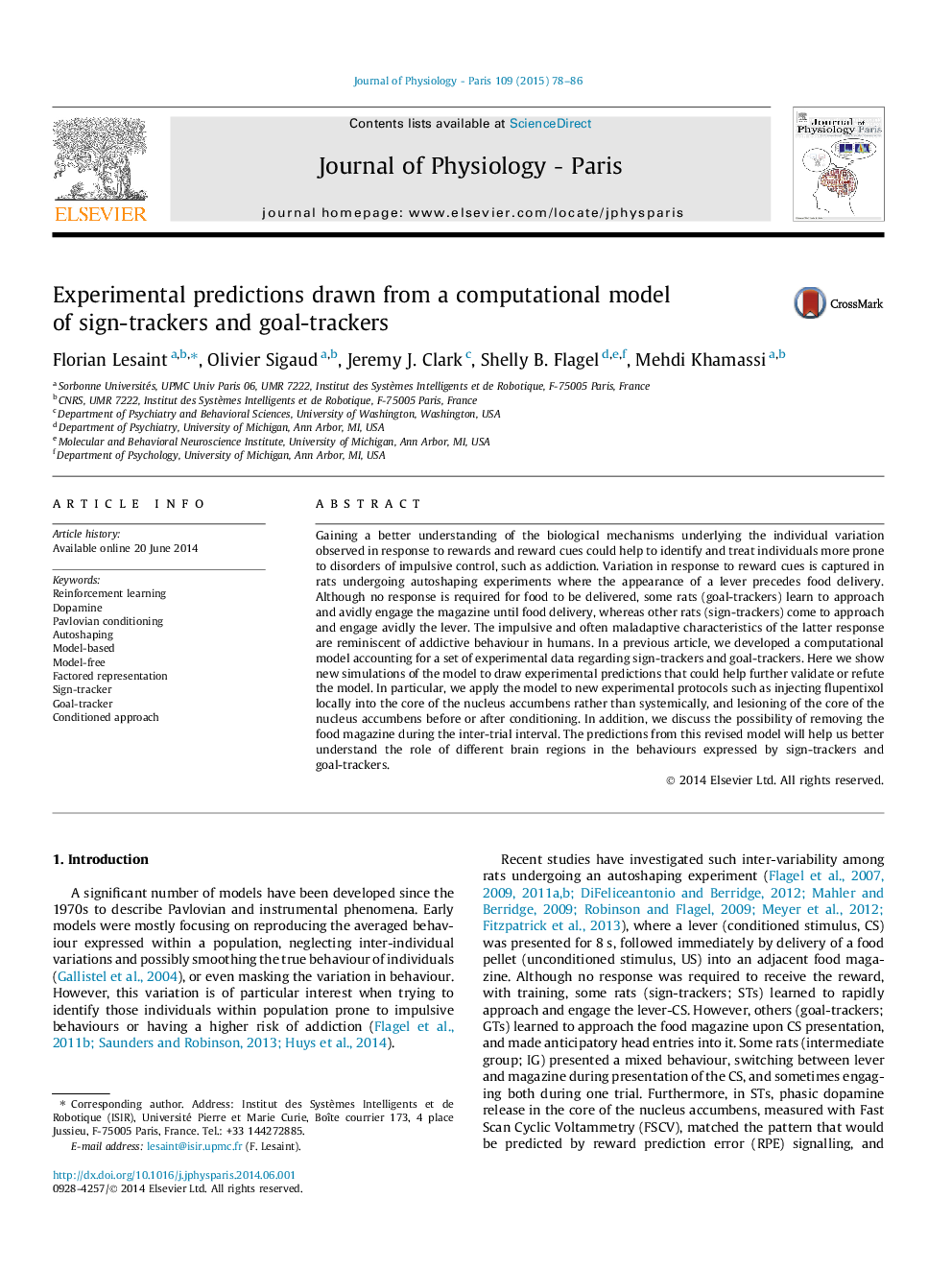| کد مقاله | کد نشریه | سال انتشار | مقاله انگلیسی | نسخه تمام متن |
|---|---|---|---|---|
| 5593296 | 1571022 | 2015 | 9 صفحه PDF | دانلود رایگان |
عنوان انگلیسی مقاله ISI
Experimental predictions drawn from a computational model of sign-trackers and goal-trackers
دانلود مقاله + سفارش ترجمه
دانلود مقاله ISI انگلیسی
رایگان برای ایرانیان
کلمات کلیدی
موضوعات مرتبط
علوم زیستی و بیوفناوری
بیوشیمی، ژنتیک و زیست شناسی مولکولی
فیزیولوژی
پیش نمایش صفحه اول مقاله

چکیده انگلیسی
Gaining a better understanding of the biological mechanisms underlying the individual variation observed in response to rewards and reward cues could help to identify and treat individuals more prone to disorders of impulsive control, such as addiction. Variation in response to reward cues is captured in rats undergoing autoshaping experiments where the appearance of a lever precedes food delivery. Although no response is required for food to be delivered, some rats (goal-trackers) learn to approach and avidly engage the magazine until food delivery, whereas other rats (sign-trackers) come to approach and engage avidly the lever. The impulsive and often maladaptive characteristics of the latter response are reminiscent of addictive behaviour in humans. In a previous article, we developed a computational model accounting for a set of experimental data regarding sign-trackers and goal-trackers. Here we show new simulations of the model to draw experimental predictions that could help further validate or refute the model. In particular, we apply the model to new experimental protocols such as injecting flupentixol locally into the core of the nucleus accumbens rather than systemically, and lesioning of the core of the nucleus accumbens before or after conditioning. In addition, we discuss the possibility of removing the food magazine during the inter-trial interval. The predictions from this revised model will help us better understand the role of different brain regions in the behaviours expressed by sign-trackers and goal-trackers.
ناشر
Database: Elsevier - ScienceDirect (ساینس دایرکت)
Journal: Journal of Physiology-Paris - Volume 109, Issues 1â3, FebruaryâJune 2015, Pages 78-86
Journal: Journal of Physiology-Paris - Volume 109, Issues 1â3, FebruaryâJune 2015, Pages 78-86
نویسندگان
Florian Lesaint, Olivier Sigaud, Jeremy J. Clark, Shelly B. Flagel, Mehdi Khamassi,